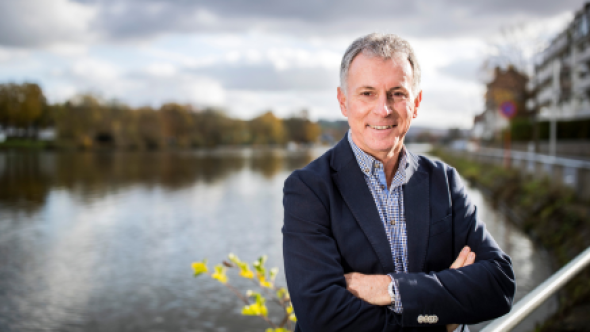This article was produced for the "Expert" section of Omalius magazine #32, March 2024.
Omalius: The presence of PFAS in our environment is in the news: is this a new issue?
Patrick Kestemont : Not at all, PFASs (Fluoroalkylated and Polyfluoroalkylated Products) have been around for decades. In fact, they're called eternal pollutants because they have an extremely long lifespan. Certain categories of PFAS, for example, have been banned for over a decade, but we still find traces of them in many consumer products, such as Tefal non-stick frying pans, carpets with anti-stain coating, and even fire extinguishers containing fire-fighting foam. They are also frequently detected in areas associated with military activities. The main characteristic of PFAS is that they are highly persistent. They are in fact chemical substances, totally synthesized by man, which have no equivalent in nature. What makes them so resistant is the bond between two of their constituent atoms: carbon and fluorine. This bond is extremely strong and difficult to break. As far as we know, there are no living organisms capable of biodegrading PFAS. This is not the case for other kinds of pollutants, which are more toxic but less resistant because bacteria can break them. However, what is also dangerous for human health is more or less prolonged exposure to a toxic substance.
O.: And you alert us to the fact that this exposure is not limited to the consumption of running water, but is very present in our daily lives, particularly in our food...
P.K. :Yes indeed. On the whole, it's worth remembering that running water in Belgium is controlled and of high quality. Of course, PFAS can be found in water, but generally in very low concentrations. The current standard is 100 nanograms per liter. However, these pollutants are actually present throughout our food chain as a result of bioaccumulation mechanisms, and in far greater proportions than in the environment. This is because an organism contaminated with PFAS will be eaten by another organism, which in turn will be eaten: the presence of PFAS increases the further down the food chain you go. For many foods, PFAS tolerance levels are much higher than for tap water: for example, a wild fish caught in the Meuse river can be sold with up to 45,000 nanograms of PFAS per kilo. Milk can contain up to 66,000 nanograms of PFAS per liter. Our entire food chain is of course subject to strict controls, based on well-established standards. But it's important to be aware that this PFAS issue is not limited to our tap water consumption.
O.: Will analyzing existing standards be one of the missions of the independent scientific council mandated by the Walloon Region, of which you are a member?
P.K.:The aim of this council is to synthesize data and literature concerning PFAS, focusing on their composition, physicochemical properties, presence, sources of contamination, levels of contamination, as well as the effects of this contamination on health. This work will take time. Our mandate is for two years. Currently, a biomonitoring campaign has been launched, involving blood sampling of thousands of people, mainly in areas affected by persistent pollutants. The sampling protocol has been approved by the Scientific Council, and the results of these analyses will be used to assess the impact on human health and potentially revise European standards.
O.: At UNamur, you head the URBE laboratory (Research Unit in Environmental and Evolutionary Biology). What are your areas of research?
P.K.: They mainly concern the analysis of physiological, biochemical and molecular responses of organisms to environmental disturbances (pollution, global warming...), molecular ecology and evolutionary genetics, as well as the ecology of communities and aquatic environments. We are currently involved in several projects, including one on the ecotoxicology of micro- and nanoplastics. We are working on innovative techniques to assess all pollutants, in particular the 4,700 PAHs (Polycyclic Aromatic Hydrocarbons). Another ongoing project concerns the study of surface water contamination problems on a river scale, with a focus on environmental health. For this research, we use alternative models such as fish larvae, in particular those of the zebrafish. Its microscopic larval size, automation and ability to provide relevant information at behavioral, physiological and molecular levels make it an effective model. Its responses to pollutants are potentially transposable to humans, offering a comprehensive, rapid and less costly analysis.
O.Faced with these various pollutants in our environment, can ecotoxicology be a source of hope for the future?
P.K.: In any case, ecotoxicology is playing a crucial role in raising awareness of the environmental problems associated with various pollutants. Thanks to the contribution of ecotoxicology, humans have been able to implement regulations to reduce the environmental impact of these pollutants. However, this is a never-ending task, as new molecules are always appearing. My hope lies in the continued ability of research to identify, regulate and reduce the impacts of pollutants for a healthier environment.
Noëlle Joris

